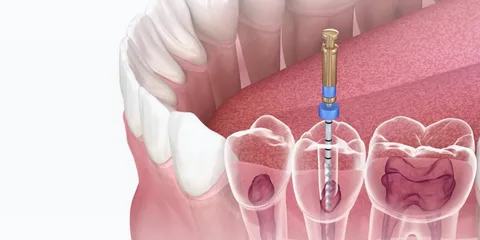health
How to Manage Family-Related Stress: Recognizing and Addressing Common Triggers

It’s no secret that family life can be stressful at times. Whether it’s juggling work and parenting, dealing with difficult relationships, or struggling to find a balance between personal needs and the needs of others, there are plenty of triggers that can lead to feelings of overwhelm and frustration. But you don’t have to resign yourself to a constant state of stress – by recognizing common triggers and implementing effective coping strategies, you can learn how to manage family-related stress in a healthy and productive way. In this blog post, we’ll explore some of the most common causes of family-related stress and offer practical tips for managing them effectively. So if you’re ready to take control of your stress levels and enjoy more peace in your family life, read on!
Recognizing the Signs of Stress
If you’re experiencing stress in your family, there are some common signs that you need to look out for. For instance, if one person in the family tends to get overwhelmed easily, they might become argumentative or reactive when stressed. Other common signs of stress in families include:
1. Breaks from normal routines. Family members who normally stick to a set routine may start breaking away from it when stressed, especially if they feel like they can’t handle the added pressure. This could involve cancelling plans with friends, missing work, or even skipping meals altogether.
2. Changes in eating and sleeping habits. When people are stressed, they may eat more junk food or alcohol or refuse to sleep at all. This might mean staying up late into the night or going days without proper rest.
3. Outbursts of anger or violence. It’s not uncommon for people under stress to lash out angrily at those around them, whether that’s their spouse, children, or parents. This could lead to arguments and fights that would otherwise not have happened.
4. Increased anxiety and worry. When someone is feeling overwhelmed by stressors in their life, it can make matters worse by causing them to become anxious and worried about everything all the time. This could manifest itself in an inability to concentrate at work or school, constant worrying about money worries, or simply feeling restless and on edge all the time
Dealing with Common Triggers of Family-Related Stress
Family-related stress can be a difficult thing to manage, but there are a few things you can do to ease the burden. Recognizing and addressing common triggers of family-related stress can help reduce the amount of stress your family experiences.
Below are five common triggers of family-related stress:
1. Communication Issues. Problems with communication are a common trigger of family-related stress. If one member of your family doesn’t feel like they’re able to communicate effectively with the rest of the group, it can cause tension and conflict. It’s important to find ways to improve communication skills so that everyone in your family feels comfortable communicating their needs and desires.
2. Money Issues. Money is often a source of tension in families. When one member of the family is struggling financially, it can put a lot of pressure on the others to help cover costs or contribute money towards the household budget. It’s important to have open discussions about finances and come up with a financial plan that works best for everyone involved.
3. Parenting Styles Issues. One common source of tension in families is disagreements about parenting styles. Some members may feel like they’re not getting enough support from their parent(s), while others may feel like they’re given too much direction or control.(1) It’s important to have open conversations about parenting styles so that everyone in your family understands how you want them raised and what expectations you have for them.(2)
4. Discipline
Tips for Managing Stress in a Family Setting
When family-related stress starts to get out of hand, it can cause tension in the home, strained relationships, and even physical problems. Here are some tips for managing stress in a family setting:
1. Recognize your triggers. Some common sources of family-related stress include big life changes like a new baby or a parent getting a new job, daily hassles like fighting about kids’ homework or constantly disagreeing about parenting styles, and minor issues that can snowball into major tensions. Once you know what typically sets off your stress response, you can start to be more aware of when things are starting to get out of control and take steps to address the issue before it escalates.
2. Talk about it. When everything is simmering inside, discussing the situation calmly and openly can help everyone come up with solutions that work for them.arguing doesn’t always lead to resolutions; oftentimes it just leads to increased conflict and frustration. Open communication allows all involved parties to have their voice heard and understand where the other person is coming from, which often leads to satisfying compromises instead of rancor.
3. Take breaks. Sometimes all we need is a brief respite from the chaos in order to clear our heads and come back with fresh ideas. Even if only for 10 minutes each day, taking time out of our hectic lives can help us get back on track when things start to spiral out of control.
4. Exercise
Conclusion
It can be hard to manage the stress of everyday life when you have a family, but there are ways to make it easier. Recognizing and addressing common triggers is one key step in managing family-related stress. By figuring out what’s causing your stress, you can start to address it head on and reduce its impact on your overall well-being.
Business
Root Canal Treatment in Lahore: Expert Care for Your Teeth

Advanced Root Canal Care in Lahore
Root canal problems are common in Lahore due to delayed dental visits and high sugar intake. Root Canal Treatment in Lahore is not just about pain relief; it is about saving your natural tooth with precision and long-term planning.

Why Root Canal Treatment Is Often the Best Option
When the tooth pulp becomes infected, extraction is not always the right answer. Saving the natural tooth helps maintain bite balance and jaw health. Root Canal Treatment in Lahore focuses on removing infection while keeping the original tooth structure intact, which is critical for long-term oral stability.
Signs That Indicate You Need a Root Canal
Many patients ignore early symptoms and visit only when pain becomes severe. Based on clinical experience, the most reliable indicators include:
- Deep, lingering tooth pain
- Sensitivity to hot or cold lasting more than 10 seconds
- Swelling near the affected tooth
- Darkening of the tooth
Early diagnosis allows Root Canal Treatment in Lahore to be completed in fewer visits with better outcomes.
Step-by-Step Root Canal Procedure Explained
This treatment is not a guess-based process. Each step is planned carefully to ensure success.
- Digital imaging to locate infected canals
- Local anesthesia for pain-free treatment
- Removal of infected pulp using rotary instruments
- Thorough canal disinfection
- Sealing with a biocompatible material
This structured approach makes Root Canal Treatment in Lahore predictable and safe.
Expertise Built on 23 Years of Dental Practice
Experience matters in endodontic care. Over 23 years, complex root anatomies, retreatment cases, and failed past procedures have been successfully managed. This level of exposure allows better judgment during Root Canal Treatment in Lahore, especially in molars with curved or hidden canals.
Technology That Improves Treatment Success
Modern dentistry is technology-driven. Advanced clinics use:
- Rotary endodontic systems
- Apex locators for accurate canal length
- Digital radiography with minimal radiation
- Magnification tools for precision
These tools significantly increase the success rate of Root Canal Treatment in Lahore.
Pain Management and Patient Comfort
Many patients fear pain due to outdated myths. In reality, the procedure is more comfortable than tooth extraction. Proper anesthesia, gentle techniques, and post-care planning ensure Root Canal Treatment in Lahore is a smooth experience even for anxious patients.
Post-Treatment Care for Long-Term Results
A root canal-treated tooth needs protection to last many years. After the procedure:
- A dental crown is usually recommended
- Oral hygiene must be maintained
- Regular follow-ups help detect early issues
With correct care, Root Canal Treatment in Lahore can preserve a tooth for decades.
Cost Factors and Treatment Planning
Costs vary depending on tooth type and infection severity. Molars require more time and expertise. Transparent consultation ensures patients understand the value behind Root Canal Treatment in Lahore, rather than focusing only on price.
Why Patients Trust Ideal Smile Dentistry
At Ideal Smile Dentistry, treatment decisions are based on clinical evidence, not shortcuts. Patients benefit from ethical diagnosis, advanced tools, and long-term planning rather than temporary fixes. This approach has built trust across Lahore’s dental community.
Why Experience Matters in Root Canal Dentistry
Dentistry is not just technical; it is judgment-based. After 23 years in dental surgery and clinical practice, patterns become clear. Knowing when to treat, retreat, or refer is what ensures patient safety and success. An experienced dentist can quickly assess complex cases, anticipate potential complications, and tailor treatments effectively.
This level of experience cannot be replaced by shortcuts or rushed procedures. Each patient’s unique anatomy and history warrant careful consideration and personalized care, which only comes from years of practicing and refining one’s skills.
Choosing the Right Dental Clinic in Lahore
Patients should look for:
- Experienced dental surgeons
- Modern diagnostic tools
- Clear treatment explanations
- Transparent pricing
- Long-term follow-up care
At Ideal Smile Dentistry, patient trust is built through experience, not marketing promises.
Frequently Asked Questions About Root Canal Treatment in Lahore
Is root canal treatment safe?
Yes, it is a routine and scientifically proven dental procedure with a high success rate.
How many visits are required?
Most cases are completed in one or two visits, depending on infection severity.
Will I need a crown after treatment?
In most cases, yes. A crown protects the treated tooth from fracture.
Can a failed root canal be retreated?
Yes, retreatment is possible and often successful with proper expertise.
Internal Resources for Patients
For related services, patients can explore:
- Tooth pain diagnosis guide
- Dental crowns and caps services
- Emergency dental care in Lahore
These resources help patients understand treatment options beyond Root Canal Treatment in Lahore.
Summary
Root canal treatment saves natural teeth, relieves pain, and restores oral health. With 23 years of surgical experience, advanced tools, and ethical care, patients in Lahore can expect reliable, long-lasting results when the procedure is done correctly.
Care
Natural Headache Relief: The Massage Therapy Solution

Headaches disrupt everything. They break your focus at work. Even ruin your sleep. They strain time with family and friends. Many people immediately choose pain medicine. It feels quick and easy. However, medicine often just masks the pain. It rarely solves the underlying problem. The pain usually returns.
Maybe you want a different solution. You might seek an approach that helps your body heal. Massage therapy is now a powerful option. It specifically targets tight muscles and stress patterns. These issues commonly cause headaches. Correctly applied, massage can reduce your pain naturally.
This guide explains exactly how headache massage works. Learn why it offers a reliable path to long-term relief.
How Massage Reduces Pain Naturally
Massage supports your body’s own healing process. It does not just cover symptoms. Let’s explore the key mechanisms.
First, it releases muscle tension.
Tight neck and shoulder muscles often trigger pain. Desk jobs and phone use strain these areas. This tension presses directly on nerves. Then, pain signals shoot to your head. Massage applies steady, deliberate pressure. It loosens these specific muscles. Reduced tension decreases nerve pressure. You will feel less stiffness. Fewer pain signals will fire. Regular sessions keep muscles relaxed longer. This directly prevents many headaches from starting.
Next, it improves blood circulation.
Tight muscles restrict healthy blood flow. Your head and neck then get less oxygen. Poor circulation can intensify headache pain. Massage gently manipulates soft tissue. This action encourages better blood flow. Improved circulation helps tissues heal and recover. Many people feel immediate warmth and ease in their neck afterward. Better blood flow can lower both the intensity and duration of headaches over time.
Additionally, it calms your nervous system.
Stress is a major headache trigger. It keeps your body in a tense “fight or flight” state. Your breathing becomes shallow. Muscles tighten unconsciously. This buildup often explodes into a headache. Massage triggers your relaxation response. It shifts your nervous system into a “rest and digest” state. Your muscles unwind. Your breathing deepens. This breaks the stress-pain cycle. You gain a tool to manage tension before it becomes a headache.
Also, it corrects posture problems
Your posture directly impacts headaches. Forward head posture (like looking at a screen) strains your neck muscles. This strain builds slowly but surely. It creates perfect conditions for chronic pain. Massage targets these overworked postural muscles. It releases the tight areas that pull your skeleton out of line. As your posture improves, mechanical strain on your neck decreases. This leads to fewer headaches and more daily comfort.
Critically, it offers sustainable relief
Medicine has its place for acute crises. However, long-term reliance poses problems. These include side effects and medication-overuse headaches. Massage provides a different, sustainable path. It builds body awareness and supports natural function. You can use it regularly without negative consequences. Many people combine it with stretching and stress management. This creates a holistic, proactive routine.
What to Expect from a Session
A professional headache massage is highly targeted. It is not a general relaxation session. First, your therapist will ask detailed questions. They will want to understand your pain patterns, daily activities, and medical history. This assessment guides their hands-on work.
The treatment typically focuses on your upper body. Key areas include your suboccipital muscles (skull base), neck, shoulders, and upper back. Therapists use specific techniques like myofascial release and trigger point therapy. They apply precise pressure to release muscle “knots” and tight fascia. The pressure is firm but should not cause sharp pain. Communication with your therapist is essential. Always tell them if the pressure is too much.
A session usually lasts between 30 to 60 minutes. Afterwards, you might feel deeply relaxed. Some mild soreness is possible, similar to post-exercise feeling. This normally fades within a day. Drink plenty of water. This helps flush metabolic waste released from your muscles.
Building a Long-Term Strategy
For chronic headaches, consistency matters. One massage might offer temporary relief. A series of sessions creates lasting change. It retrains tense muscles and resets poor posture. Many people start with weekly sessions. They then move to bi-weekly or monthly maintenance.
Your therapist can also give you tools for home. They may teach you simple neck stretches or self-massage techniques. They might advise on desk ergonomics or stress-reduction practices. This empowers you to take control between appointments.
Making the Choice for Your Health
Headaches can control your life, but you have options. If your pain stems from tension, stress, or posture, massage addresses these roots directly. It is a practical, drug-free method to reduce pain frequency and severity.
Choose a qualified professional. Look for a licensed massage therapist experienced in clinical or therapeutic work. Be clear about your headache history and goals.
Commit to a plan. Partner with your therapist. Give the process a few sessions to work. Combine hands-on care with the lifestyle changes they recommend.
Ultimately, this approach is about more than pain relief. It is about reclaiming your focus, your sleep, and your daily joy. It is an investment in a life with fewer interruptions and more comfort. Take the step toward lasting relief. Your body—and your calm, clear head—will thank you.
Care
Why CBD Intimacy Oil Is the Must-Try Product of the Year

Connection begins long before any physical moment. It starts with how relaxed you feel in your body and how present you are with yourself. That is why more people are turning toward plant-based wellness to support intimacy in a more natural way.
Products inspired by healing spirits herbs focus on calming the nervous system, supporting sensitivity, and creating an environment where closeness feels easy rather than forced. This shift reflects a deeper desire for comfort, trust, and genuine connection.
As conversations around wellness grow more open, CBD intimacy oil has moved into the spotlight. Many people actively search for CBD intimacy oil for sale because it offers a gentle, supportive option rather than an aggressive solution. Instead of masking discomfort or pushing the body, it works with natural rhythms to encourage relaxation and ease. That alone makes a noticeable difference in how intimate moments unfold.
What makes CBD intimacy oil different from traditional products
Unlike conventional lubricants or enhancement products, CBD intimacy oil supports the body on multiple levels. It does not rely on numbing agents or synthetic stimulants. Instead, it focuses on comfort, circulation, and calm.
Key qualities that set it apart include:
- Plant-based ingredients that feel gentle on sensitive skin
- CBD compounds are known for their soothing and relaxing effects
- Oils that nourish the skin rather than dry it out
- A focus on comfort instead of performance pressure
These qualities allow intimacy to feel more organic and less goal-driven.
CBD works with the body’s endocannabinoid system, which plays a role in regulating stress, sensation, and balance. When the body feels safe and relaxed, it naturally becomes more receptive. This is why many people report improved comfort and awareness when using CBD-infused products during intimate moments.
The emotional side of physical comfort
Physical ease and emotional connection often move together. When the body holds tension, the mind follows. CBD intimacy oil helps reduce that tension, which allows people to stay present rather than distracted.
Reduced discomfort leads to:
- Less anxiety around intimacy
- Greater confidence in one’s body
- Improved communication with a partner
- A slower, more mindful pace
These changes may feel subtle at first, but they build over time. Intimacy becomes less about effort and more about shared experience.
Wellness routines outside the bedroom also play a role. Many people who explore CBD intimacy oil already value calming rituals throughout the day. Practices like stretching, quiet evenings, or choosing to buy herbal teas and tisanes help create a relaxed baseline. When the nervous system feels supported daily, intimate moments feel more natural and enjoyable.
How to use CBD intimacy oil with intention
Using CBD intimacy oil works best when you slow down and stay attentive. Rushing defeats the purpose. Treat the oil as part of the experience, not a tool to get past discomfort as quickly as possible.
Helpful guidelines include:
- Start with a small amount and add more only if needed
- Warm the oil between your hands before applying
- Use slow, mindful touch rather than quick movements
- Communicate openly about comfort and preferences
This approach turns the application into a shared ritual instead of a mechanical step.
Many couples find that intention matters as much as the product itself. Setting aside distractions, lowering lights, or playing calming music helps reinforce the sense of safety and presence. CBD intimacy oil simply supports what the environment already encourages.
Choosing quality and transparency
Not all CBD products meet the same standards. Ingredient quality, sourcing, and formulation matter, especially for intimate use. Reputable wellness brands focus on clean ingredients and clear labeling.
When choosing a product, look for:
- Third-party testing for purity and potency
- Simple ingredient lists without harsh additives
- Clear guidance on usage and storage
- Brands that prioritize education, not hype
This level of transparency builds trust and ensures the product aligns with a holistic approach to wellness.
Many people prefer shopping through a trusted apothecary in Denver or similar wellness-focused retailer because these spaces emphasize quality, ethics, and customer education. This makes it easier to choose products that truly support well-being rather than chase trends.
Why CBD intimacy oil fits modern wellness values
Today’s wellness culture values balance, consent, and self-awareness. CBD intimacy oil fits naturally into this mindset. It does not promise instant transformation. Instead, it supports comfort, communication, and connection over time.
This product resonates because:
- It respects the body’s natural responses
- It encourages slower, more mindful experiences
- It aligns with plant-based and holistic lifestyles
- It supports intimacy without pressure or expectations
These qualities reflect a broader shift away from quick fixes and toward sustainable well-being.
CBD intimacy oil has earned its place as a must-try product because it supports both body and mind. Easing tension, improving comfort, and encouraging presence help intimacy feel more natural and connected. When paired with thoughtful self-care and honest communication, it becomes part of a wider wellness practice that values depth over speed and connection over performance.
-
Business2 years ago
Cybersecurity Consulting Company SequelNet Provides Critical IT Support Services to Medical Billing Firm, Medical Optimum
-
Business3 years ago
Team Communication Software Transforms Operations at Finance Innovate
-
Business3 years ago
Project Management Tool Transforms Long Island Business
-
Business2 years ago
How Alleviate Poverty Utilized IPPBX’s All-in-One Solution to Transform Lives in New York City
-
health3 years ago
Breast Cancer: The Imperative Role of Mammograms in Screening and Early Detection
-
Sports3 years ago
Unstoppable Collaboration: D.C.’s Citi Open and Silicon Valley Classic Unite to Propel Women’s Tennis to New Heights
-
Art /Entertainment3 years ago
Embracing Renewal: Sizdabedar Celebrations Unite Iranians in New York’s Eisenhower Park
-
Finance3 years ago
The Benefits of Starting a Side Hustle for Financial Freedom

































